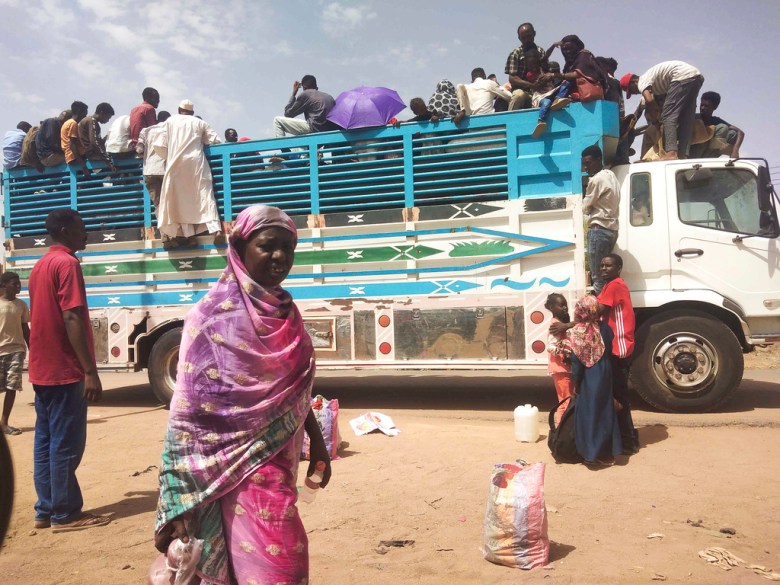By Edith M. Lederer,
The Associated Press
UNITED NATIONS (AP) — The conflict in Sudan has left 24 million people — half the country’s population — in need of food and other assistance, but only 2.5 million have received aid because of vicious fighting and a lack of funding, two senior U.N. officials said Aug. 4.
Eden Worsornu, director of operations for the U.N. humanitarian agency, and Ted Chaiban, deputy executive director of the U.N. children’s agency UNICEF, who just returned from Sudan, painted a dire picture of devastation and upheaval in Sudan, with no peace talks in sight.
Worsornu said hotspots, such as the capital of Khartoum and the southern Kordofan and western Darfur regions, “have been shattered by relentless violence.” Nearly 4 million people have fled the fighting, facing scorching heat up to 48 degrees Celsius (118 F), and threats of attacks, sexual violence and death, she said.
The now nearly four-month conflict has killed more than 3,000 people and wounded over 6,000 others, according to the last government figures, released in June. But the true tally is likely much higher, doctors and activists say.
“Before the war erupted on the 15th of April, Sudan was already grappling with a humanitarian crisis,” Chaiban said. “Now, more than 110 days of brutal fighting have turned the crisis into a catastrophe, threatening the lives and futures of a generation of children and young people who make up over 70% of the population.”
The fighting pits forces loyal to top army Gen. Abdel-Fattah Burhan against his rival, Gen. Mohammed Hamdan Dagalo, who commands the paramilitary Rapid Support Forces.
Worsornu and Chaiban, who previously worked in Sudan, said ethnic violence has returned to Darfur, where attacks two decades ago by the notorious Janjaweed Arab militias on people of Central or East African ethnicities became synonymous with genocide and war crimes.
Now “it is worse than it was in 2004,” Worsornu said.
The statistics are grim: 24 million people need food and other humanitarian aid, including 14 million children, a number equivalent to every single child in Colombia, France, Germany and Thailand, Chaiban said.
The U.N. has been trying to get aid to 18 million Sudanese, but 93 of its humanitarian partners were able to reach only 2.5 million between April and June because of the severe fighting and difficulties getting to those in need.
“Right now, Sudan is one of the most dangerous places to operate,” Chaiban said. “So, to do 2.5 million people, 780 trucks, mobilizing and negotiating to get in, has been no small feat.”
Worsornu said 18 aid workers had been killed so far in Sudan.
But, she added, “Humanitarian aid is just a band aid. Basic social services have completely broken down, banking systems do not work and schools have collapsed.”
After the conflict erupted, the U.N. increased its humanitarian appeal to $2.6 billion. Woorsornu said the appeal had received just $625 million, barely 25 percent. “We cannot do more without funding,” she said.
Chaiban said 3 million children under age 5 are malnourished, “with 700,000 at risk of severe acute malnutrition and mortality.” He said UNICEF has gotten life-saving treatment to 107,000, but that is only about 15 percent of those who need it.
Sudan borders seven nations — Central African Republic, Chad, Ethiopia, Eritrea, South Sudan, Libya and Egypt — and most of them would be vulnerable to upheaval if the conflict should spill over.
“We need to be careful that if the situation in Sudan is not contained, it will have a devastating impact on the region,” Worsornu said.
The post Fighting has plunged Sudan into a humanitarian catastrophe, senior UN officials say appeared first on AFRO American Newspapers .











